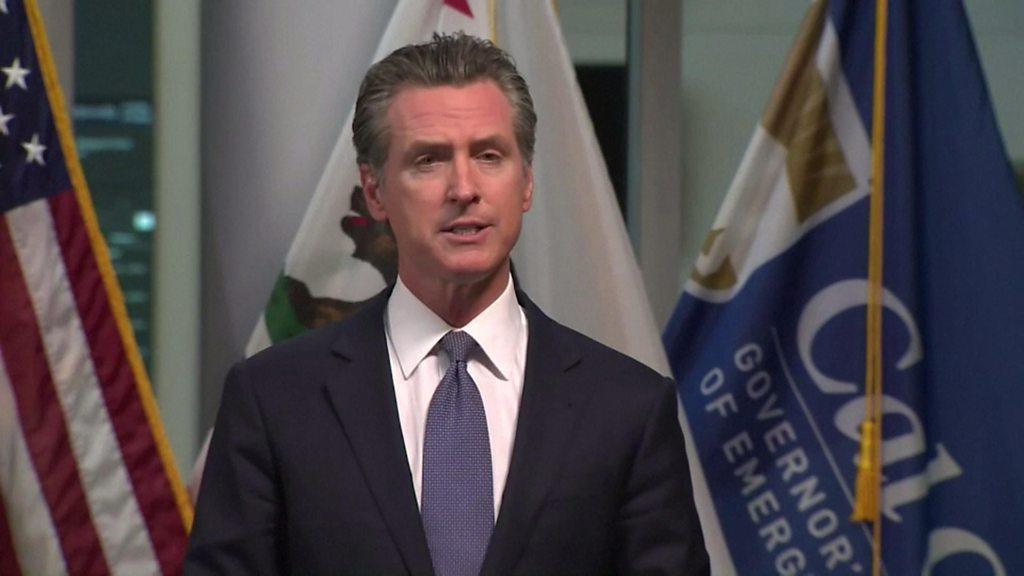Covid in California: The state is struggling to contain the virus
- Published

California was praised for acting swiftly to contain the coronavirus last spring. Now more than 31,000 people have died of the virus in the state. What went wrong?
California was the first to issue a state-wide stay-at-home order, and experts at the time predicted the pandemic would peak here in April with fewer than 2,000 lives lost.
But since November, deaths have surged by more than 1,000%. In Los Angeles alone, nearly 2,000 people died this week.
Makeshift morgues have been set up across the state, ICUs are full, oxygen is being rationed and ambulance teams have been told not to transport those unlikely to survive the night because hospitals are too full.
Disneyland, which has been closed since March, is now being turned into a massive vaccination centre, along with Dodger Stadium, in the hopes of controlling what's become a super surge.
Why is California in such dire Covid straits?
"Fatigue," says Dr Neha Nanda, of the University of Southern California's Keck School of Medicine. "It's multifaceted, but fatigue is a big reason why."
Southern California and Los Angeles are the hardest hit regions in California and the United States right now.

Disneyland has opened a mass vaccination site

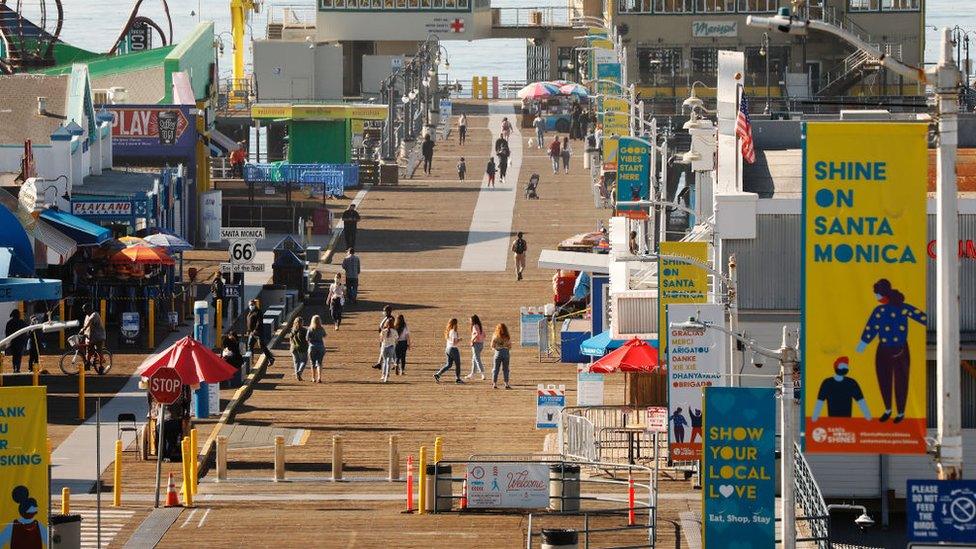
Santa Monica Pier has been temporarily closed January weekends in an effort to mitigate spread
Local and state officials begged Californians to not make holiday plans from Thanksgiving through to New Year. But even strict mandates here often go unenforced.
Many businesses have collapsed, the film industry is mostly dormant. Productions that do get the green light are often forced to shut down again due to coronavirus outbreaks on set.
And most schools in California have been closed since 13 March, with children isolated at home on computers, often with their parents away at work or trying to work alongside their children on overstretched Wi-Fi.
And like most places, Covid-19 has hit Los Angeles' poor the hardest.
Dr Heidi Behforouz, the medical director of LA County's Housing for Health, says she thinks Los Angeles is a city accustomed to tolerating extreme inequities in a country that does the same.
"We're sort of a pull yourself up by your bootstraps kind of country - we're very individually minded and it's hard for us to think about giving up what we feel is our right to do what we want," she says.
While Covid-19 can infect anyone, it's definitely more cruel to the have-nots than the haves.
For every case of Covid in Beverly Hills, there are six times more in Compton. While two people from Bel Air have died, more than 230 people have lost their lives in working-class East LA.
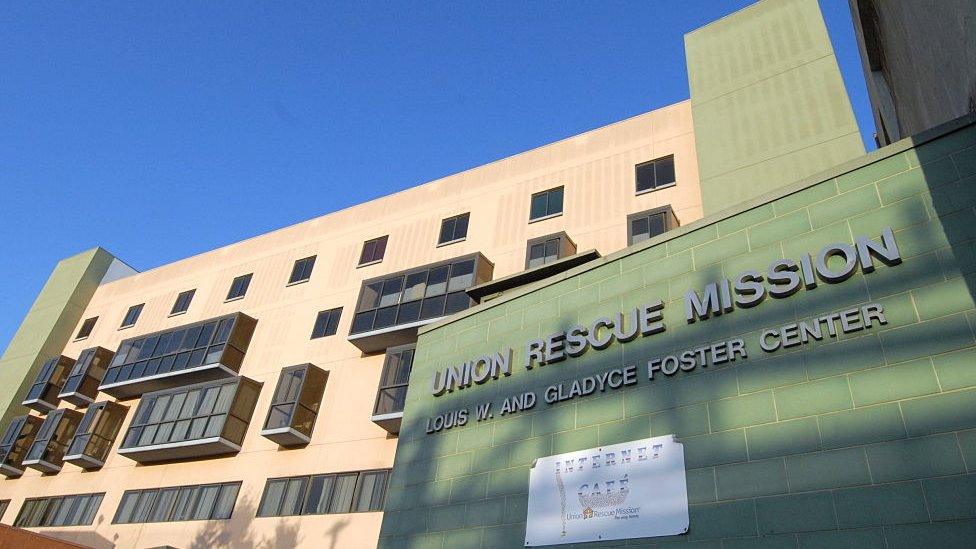
And now, the virus is surging through LA's vast homeless population. People who live in Los Angeles are used to driving past dozens, hundreds or even thousands of people living on the streets every day.
At the beginning of the pandemic, they were largely spared from infection - likely because they're so isolated as a population.
Cities and counties are using trailers and motels to house Covid positive people without shelter.
The Union Rescue Mission on LA's Skid Row is normally buzzing with lively dinner guests and residents. But in these pandemic days it's quiet, with most of its residents isolated in quarantine.
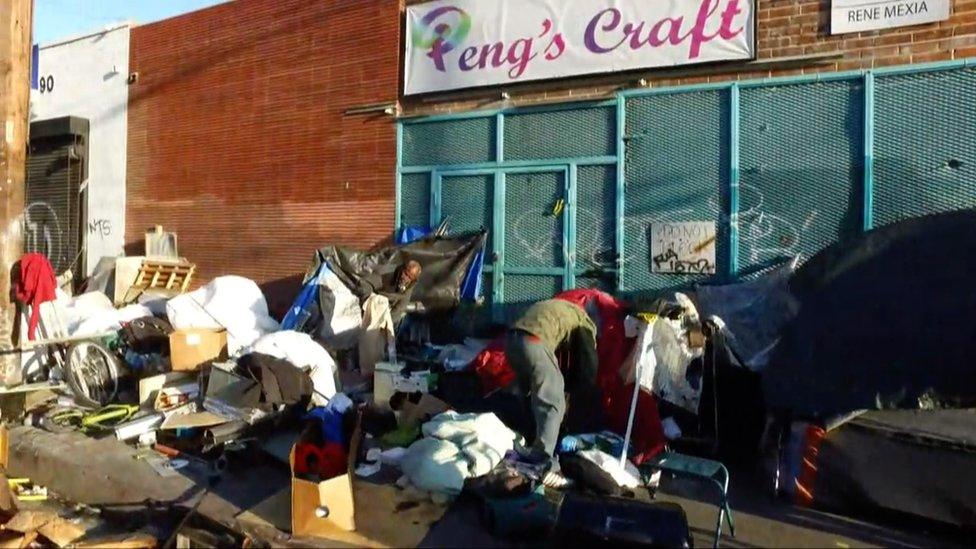
There is concern about a surge of Covid in LA's Skid Row community
Behind the building, a fabric tent meant to house the most vulnerable women on the streets is now a field hospital full of men with Covid, tended to by doctors and nurses covered head-to-toe in the now familiar protective gear.
"The Covid situation is the worst ever and this is the most horrific battle we've ever been in," says Reverend Andy Bales, who runs the mission.
"It's like playing chess with a monster genius - every move we make, it gets overcome by Covid."
At the beginning of the pandemic in March, Mr Bales was relieved that the homeless population seemed spared from the coronavirus.
But then in April, a beloved staff member at the mission, Gerald Shiroma, died of the virus. He was 56.
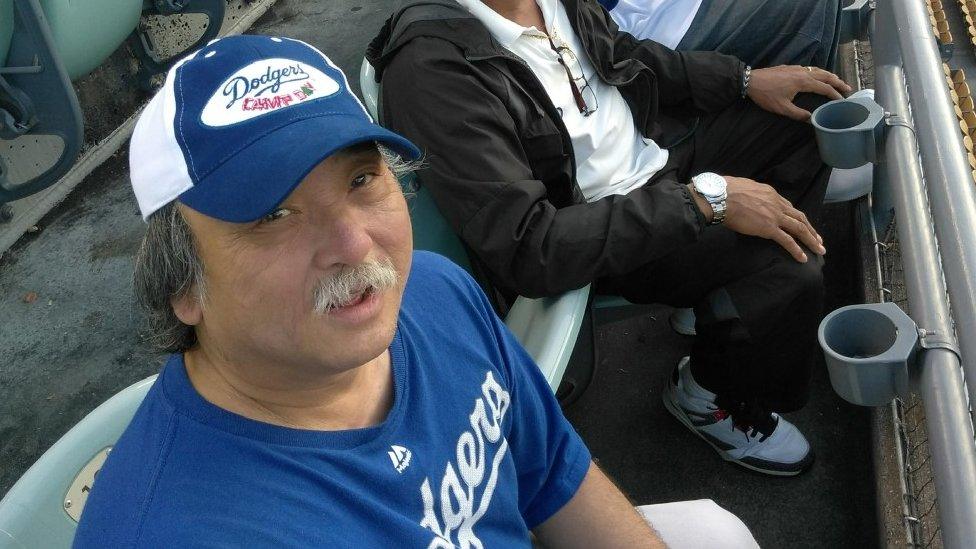
Gerald Shiroma, who died from Covid in April, was a Dodgers fan
Mr Shiroma had overcome a meth addiction and a life on the streets to become a sober and was a beloved driver at the mission.
"He was a wonderful guy," Mr Bales says. "Everyone here loved him."
As exhausted frontline medical workers continue their fight, the fear is that things will continue to get worse.
As the virus spreads, it's likely mutating more than we know, says Dr Neha Nanda.
"Maybe the bigger the place, the more variation," she says.
Related topics
- Published15 January 2021

- Published12 January 2021
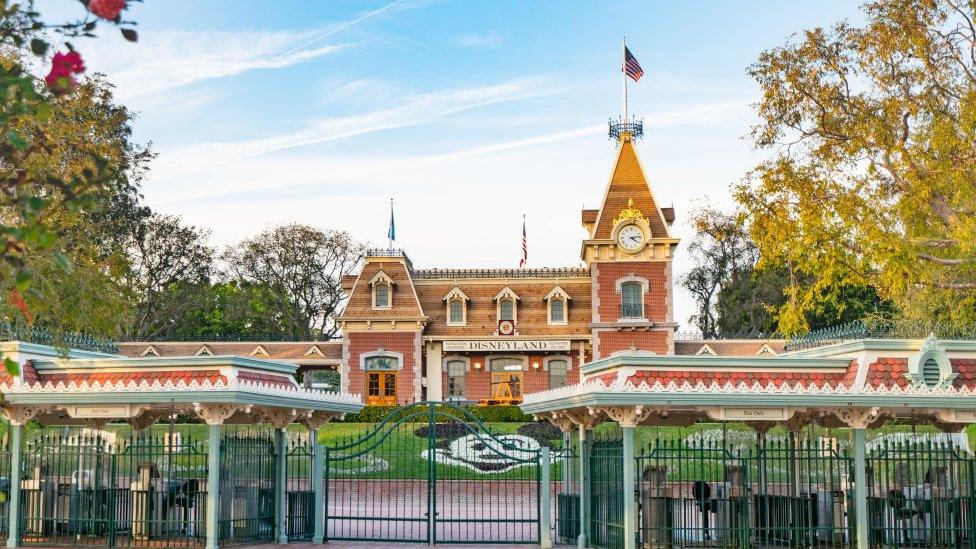
- Published5 January 2021
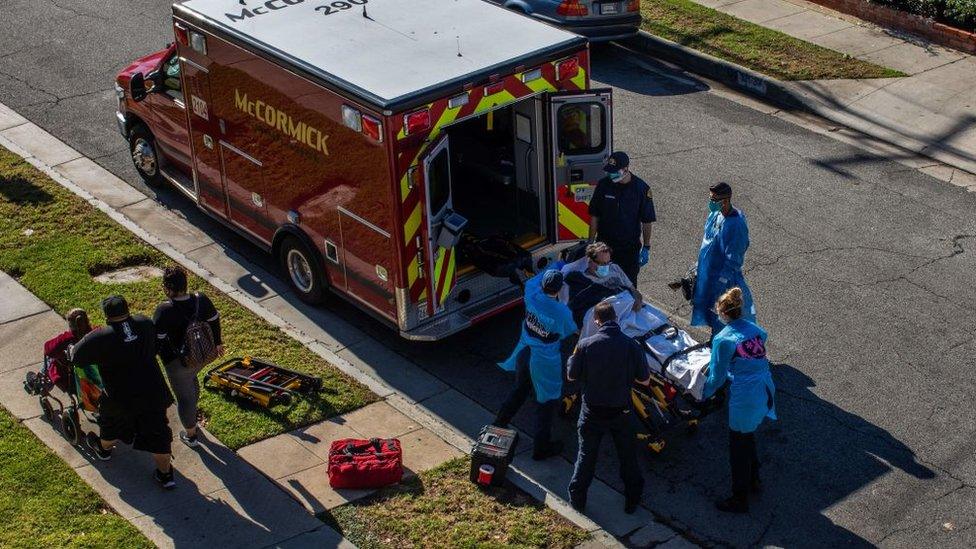
- Published7 December 2020
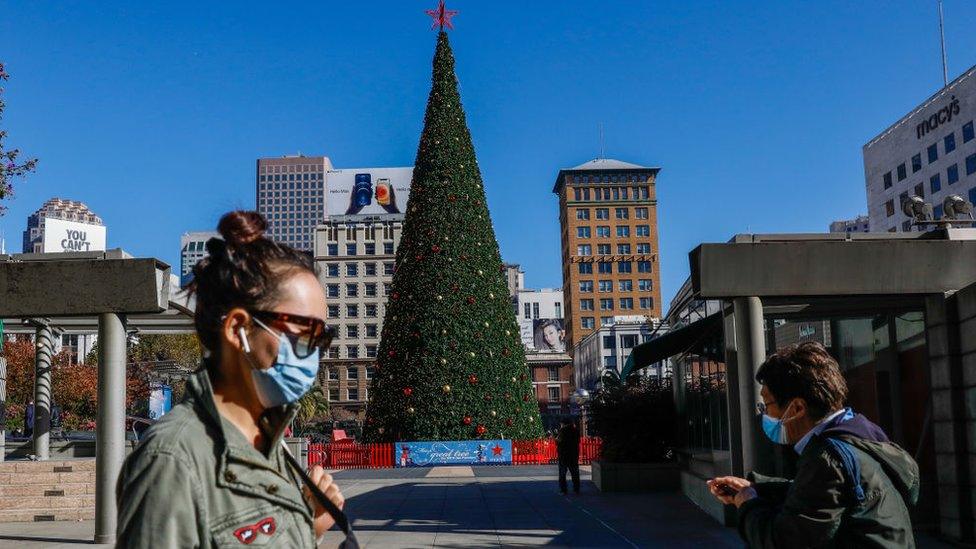
- Published20 March 2020
